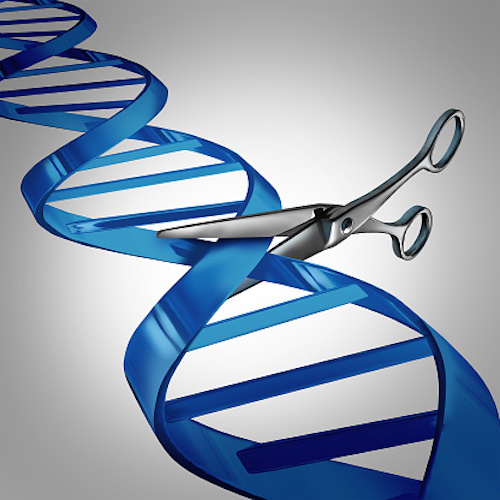U.S. researchers have discovered how to dramatically lower the error rate of an advanced CRISPR-based genome editing approach, which could aid in the treatment of many genetic diseases.
The revised prime editing strategy, outlined in Nature, could improve the safety of gene therapy for many inherited diseases.
Prime editors make programmed genomic modifications, creating functional genes out of those that were previously faulty, but there is a small chance that harmful errors are created as byproducts.
These insertion and deletion (indel) mutations generated instead of the intended edit within a fraction of the targeted cells can result in DNA sequences that are unpredictable and can be possibly damaging, such as promoting tumor growth.
But using the new approach, researchers were able to reduce the error rate of prime editors from one in seven edits to one in 101 in the most-used editing mode. In the high-precision mode, this reduced from one in 122 to one in 543.
“This paper outlines a new approach to doing gene editing that doesn’t complicate the delivery system and doesn’t add additional steps, but results in a much more precise edit with fewer unwanted mutations,” summarized researcher Phillip Sharp, PhD, from MIT.
MIT and Harvard researchers developed the prime editing technique in 2019 as a more precise CRISPR-based system that had fewer off-target effects. The technique was recently used to successfully treat a patient with chronic granulomatous disease (CGD), a rare genetic disease that affects white blood cells.
Prime editors are advanced CRISPR tools that enable the replacement of targeted DNA with programmed sequences. The system uses a modified Cas9 enzyme that cuts just one of the complementary DNA strands instead of the usual two. A guide RNA together with the prime editor are then delivered to serve as the new gene sequence, which is inserted at the cut.
Once the new sequence has been copied, issues can arise when it competes with the original DNA strand to be included into the genome. If the original sequence ‘wins’ then the new DNA could be incorporated elsewhere, resulting in unintended consequences that could be harmless but may also lead to tumors or other issues.
To improve on the current prime editing system, the researchers homed in on Cas9 proteins that, instead of cutting at the same point in the DNA sequence, cut a base or two further along.
This made the original DNA less stable and more easily degraded, so the new strands were more likely to incorporated and less errors resulted.
The team identified Cas9 mutations that decreased errors to a twentieth of the original rate and, by combining pairs of these, lowered this figure even further to a thirty-sixth of the original.
The new Cas9 proteins were then included into a prime editing approach with an RNA binding protein that was better at stabilizing the ends of the RNA template in a final editor dubbed vPE and had an error rate that was a sixtieth of the original.
“We described the surprising discovery that prime-editing errors can be greatly suppressed through engineering the CRISPR nuclease,” the researchers reported.
“We routinely observed several-fold decreases in indels with our engineered prime editors coupled with high editing efficiencies, resulting in significant increases in edit:indel ratios.”
They added: “The design of prime editors that produce minimal errors shows that protein engineering can address a key challenge for precise genome editing.
“This approach is minimally invasive to cells, requiring no manipulation of cellular states, modulation of DNA repair processes or addition of exogenous factors.”

